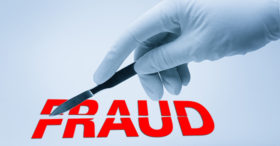According to the Association of Certified Fraud Examiners’ Report to the Nations: 2018 Global Study on Occupational Fraud and Abuse, organizations victimized by fraud lose a median $130,000. But construction companies, in particular, are even harder hit, with a median loss of $227,000. What can you do to protect your construction business? Adopt this checklist.
Ways to tighten controls
An effective strategy for minimizing fraud is to tighten your internal controls. Make sure the following are part of your policies and procedures:
Surprise audits and jobsite visits. These visits can not only help detect fraud, but also send a strong message that combating fraud is a priority — which is a powerful deterrent.
Segregation of duties. Avoid situations in which one person handles multiple financial or accounting tasks. For example, the person who processes cash transactions shouldn’t also prepare the company’s bank deposits.
Bank statements. Have monthly bank statements sent to you or a manager independent of the accounting function. Canceled checks should be reviewed for unfamiliar payees and forged signatures.
Purchase monitoring. Name someone other than the purchasing agent — you or an estimator, for instance — to review vendor invoices, purchase orders and other documents. Use prenumbered purchase orders. Physically check materials and supplies to ensure they correspond to what was ordered in terms of quantity and quality.
Kickbacks and bid-rigging. If your company is suddenly winning bids that you haven’t in the past and that seem like a stretch, verify that your bid processes have been followed. Sometimes employees disguise illegal activities as change orders, so be sure to scrutinize each change order.
Budget analysis. Prepare annual budgets — for your company and each job — and regularly compare actual results to budgets. Scrutinize large or unanticipated discrepancies.
Payroll practices. Have someone independent of your accounting department verify the names and pay rates on your payroll. If you don’t already, pay employees using direct deposit, rather than with checks or cash.
Vacation policy. Require full-time employees to take time off every year. Fraud is often exposed when the perpetrator isn’t there to cover it up.
Many benefits
These are just some of the many internal controls contractors should implement to protect their businesses. In addition to preventing and revealing fraud, solid internal controls can help avoid accounting errors, reduce waste and boost cash flow by making billing, purchasing and other processes more efficient. Contact us for more information at 205-345-9898 and [email protected].
© 2019 CovenantCPA









